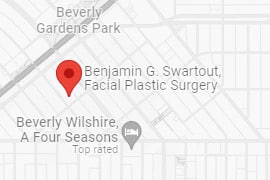Through the facelift surgical procedure, a board-certified facial plastic surgeon creates more youthful contouring of the lower face and jawline, allowing patients to achieve a rejuvenated appearance and look years younger.
The process of aging causes areas of sagging skin which significantly age the face and neck. The contouring of the lower face begins to soften, creating jowls and diminishing attractiveness.
Fortunately, cosmetic anti-aging surgery can restore a youthful appearance and vitality to most áreas of the face, including:
- the forehead
- cheeks
- neck
- jawline
All the while improving the facial appearance of excess skin and displaced fat.

What is Facelift?
Facelift surgery remains one of the best ways to comprehensively revitalize the aging face from the cheeks to the neck. During the surgical procedure, your doctor:
- the doctor tightens underlying facial muscles
- your facial plastic surgeon redistributes facial tissues and fat
- we trim & tighten excess skin
A specialist should always be the one to perform this classic and effective plastic surgery, to help ensure a natural result. For a more complete facial rejuvenation, your surgeon can pair other procedures, like eyelid surgery (also called blepharoplasty) or dermal fillers, with traditional facelift surgery for the best aesthetic result.
How Facelift in Los Angeles is Performed
An anesthesiologist will put the patient into a comfortable sleep before the procedure. A plastic surgeon begins the surgery by skillfully concealing surgical incisions in the hairline, as well as behind and around the ears. Through these, he can gain entry to the tissues of the face.
The doctor may remove pockets of fat with facial liposuction or excision techniques. The doctor will then tighten the muscles and other structures and remove extra skin. The remaining loose skin is then pulled slightly taut and the incisions are sutured . Board-certified plastic surgeons have the experience and skill to achieve natural results — they take care not to over-modify the face which, can lead to an artificial or “windswept” look.
Facelift surgery is customizable to the patient’s needs, targeting different areas of the face, like the upper, mid, and lower region. Different surgical techniques will be used to smooth forehead lines, create a lifting of the cheeks, and contour the jawline. The doctor can strategically alter certain areas of the face that show signs of aging, which also promotes a realistic and attractive final result.

Facelift Recovery
Following a facelift, patients can usually go home the same day, but should not drive themselves. Patients may require the assistance of a spouse or family member to care for them for the first 24 hours. They can aid in helping to administer the appropriate amount of medications and ensuring the patient is comfortable. Avoid sun exposure. Post-operative swelling and bruising will be visible following surgery, but the majority of this should resolve within 7-10 days.
Your surgeon will prescribe medications to control pain and swelling, stave off infection, and help promote healing. Recovery time shouldn’t be more than a couple of weeks. In about a week or two, patients can use approved cosmetics to conceal any discoloration or temporary irregularities that have yet to resolve. For the most part, you’ll be able to return to your regular activities within about two weeks and even to your work, assuming it is not strenuous.
Our office staff will schedule follow-up visits with your doctor. The doctor can monitor the results and address any issues that can arise following a procedure.
A mini facelift offers similar results, but with quicker recovery time. Also known as the “one-hour facelift”, it’s a convenient procedure to have over a weekend.
What are the qualifications for facelift surgery candidacy?
Candidates for facelift surgery are individuals who have begun to display visible signs of aging on the face, such as sagging skin, wrinkles, and marionette lines. The ideal candidate is between the ages of 40-60 and has good facial structures with healthy deeper tissues that will respond well to the surgery.
The goal of a facelift is to restore a youthful look by improving the quality of the skin along the cheeks, jawline, and neck, while also addressing deeper wrinkles and lines. Patients should be in good overall health and have realistic expectations about what a facelift can achieve.
During an initial consultation at our plastic surgeon’s office, patients should discuss their medical history, lifestyle habits, and cosmetic goals with our board-certified doctor. He or she will assess your facial features to determine if you are a good candidate for this procedure. Our surgeon will then explain all aspects of the surgical plan, including incision locations, anesthesia type used during surgery, post-operative recovery timeline and potential risks or complications associated with the procedure, as well as the expected aesthetic result that can be achieved through facelift surgery.
A Consultation for Facelift
We encourage patients interested in a facelift to schedule an initial consultation appointment with their preferred facelift surgeon. During the initial consultation, the doctor will:
- review the patient’s entire medical history
- learn about their goals and concerns
- examine the face
In some cases, a doctor may recommend an alternative or additional cosmetic procedure that will best help the patient reach his or her aesthetic goals.
The doctor will then create a treatment plan that suits the patient’s needs and provide computer imaging that will display an approximation of the expected results. He or she can also show prospective patients examples of previous facelift procedures that they has performed, to help them understand what is possible.
Complementary Procedures for Facelift
Eyelid Surgery
Oftentimes, the eye area is among the first to show a person’s age. This is because the eyes are constantly in motion and have delicate skin around them.
With facial aging, the upper eyelid skin may begin to crease and cause a hooded appearance. Crow’s feet may form at the corners of the eyes, while under-eye bags can cause a chronically tired appearance. During upper or lower eyelid surgery, we can address these cosmetic issues to refresh the eyes.
Dermal Fillers
Most physicians perform cosmetic injections using trusted fillers, like Restylane and Juvederm. These fillers help smooth out deep wrinkles in the skin and replace lost volume, often in the lips and cheeks. They formulate these injections from a bio-compatible synthetic gel, rather than harvesting a patient’s fat or using a bovine collagen source. This means that the materials are more readily available for regular use.
The effects of injectable fillers last for months. The physician administers the fillers again once the effects have faded. Dermal fillers are a great option for areas that need rejuvenation but may not require surgery. We can also use fillers to enhance surgical results.
Botox Cosmetic
The differences between facial fillers, like Restylane and Juvederm, and the dynamic wrinkle treatment Botox confuses many people. While a doctor applies fillers to plump areas of the face, they can also administer Botox to block movements that cause lines and wrinkles or nasolabial folds. Some people fear the inability to make regular facial expressions and the loss of their signature facial features, which is understandable. But when performed by an expert, Botox treatments will improve wrinkles while still allowing for normal facial movements.
Other Non-Surgical Options
Though many doctors can perform non-surgical procedures like dermal fillers alongside a facelift, fillers can also postpone the need for surgery in certain cases. Often, patients in their early 30s and 40s may begin to develop fine lines and creases in areas like the forehead, eyes, and lips.
Undergoing a facelift too early in one’s life may not be the best option, as you may be more likely to require one in later years. Facelift surgery can also create results that appear too dramatic for a younger person’s age, even the loss of some unique facial features. By providing cosmetic injections, the doctor addresses imperfections in the skin while obtaining a naturally youthful look.
Cost of a Facelift Procedure
The cost of a facelift procedure can vary, depending on the type of facelift, the complexity of the surgery, and other factors such as the surgeon’s expertise and geographic location. Generally speaking, traditional facelifts (also known as rhytidectomies) range from $7,000 to $15,000.
During a facelift consultation with your plastic surgeon, he or she will evaluate your facial anatomy and discuss how best to address your aging concerns. Depending on the degree of laxity in your skin, muscles, fat tissue, and connective tissue, your surgeon may recommend different types of facelifts, such as mid-facelift or mini-facelift.
After discussing all these aspects with you during the consultation session, your doctor will review with you a list of potential incision sites, based on natural creases around the face and neck area. He or she will also discuss any additional tests that may be necessary before surgery such as blood pressure measurement or lab work.
Once all this is discussed in full detail and you decide to move forward with surgery, your doctor can provide you with an accurate estimate for the cost of a facelift procedure tailored just for you. Be sure to ask about financing options, if needed, so that you can make this important decision without worrying about finances
Facelift FAQS
Ready to Refresh Your Appearance? Find a Qualified Provider Today
If you’re considering a facelift to rejuvenate the appearance of your face and neck, you’re not alone. With so many options to choose from, it can be overwhelming to find the right practitioner for you. We recommend doing your research, reading reviews, and speaking with multiple doctors to find the one that is the best fit for you.

